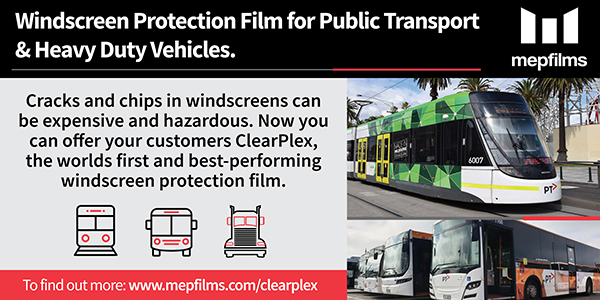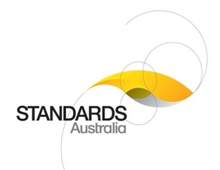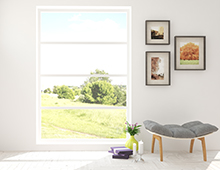December 2021

Welcome to the December 2021 issue of Window Film News.
How to recap 2021? For the ANZ window film industry, it was marked by restrictions, trends and shifting regulations that impacted tinters in diverse ways. As was the case last year, some fared better than others, some businesses struggling, some thriving, and many in lockdown areas facing periods of little to no work followed by massive surges in bookings. As the industry stabilises, a positive development is our governments’ commitment to 2050 net zero targets, which has intensified the focus on sustainability and renewed interest in window film as an energy efficient retrofit solution.

How window film plays into Australia’s hottest issue
Climate change and net zero emissions – two phrases saturating the news this year. Prime Minister Scott Morrison said in October, “Australia now has a target to achieve net zero emissions by 2050, and we have a clear plan for achieving it.”
Net zero refers to the international objective to get carbon emissions down to net zero, in response to the climate change crisis. This year Australia committed to a 2050 net zero target, so what does that mean for flat glass film?

The opportunity lies in the built environment – window film as a retrofit option to reduce the carbon emissions of existing homes, apartments and buildings across Australia. The potential for our industry was emphasised in the PowerHousing Report, released November 4, stating 8 million Australian homes needed improvements to reduce carbon emissions, and those 8 million homes contribute 18-20% of Australia’s carbon emissions.
WFAANZ President Ally Cronan comments, “To reach our goal of net zero by 2050, will the government’s ‘clear plan’ be to demolish 8 million homes and start again? Of course not. The solution lies in energy efficient retrofit options, which means window film can play a fundamental role in these initiatives. This creates exciting growth opportunities for our members, in particular those who are WERS For Film accredited.”
The ability to achieve accreditation through WERS For Film gives tinters a credible, recognised platform from which to promote their business and themselves as “energy experts”. When homeowners, landlords, facility managers and government buildings are further incentivised to find ways to reduce their carbon footprint – having an energy credential setting you apart from competitors becomes a game-changer. For more information about the program please follow this link or download the WERS For Film info sheet.
In response to the sustainability megatrend WFAANZ has formed a Sustainability Subcommittee, comprising distributors and tinters across Australia and New Zealand. Our aim is to ensure WFAANZ is well placed, from a strategic and resource perspective, to capitalise on the groundswell of interest surrounding the issue of sustainability and energy efficiency.
TAFE tinter training
Two factors underpin everything WFAANZ does – raising the standard of the industry and gaining industry recognition for tinters. This year, the launch of the successful TAFE tinter training program was a crucial step towards meeting both objectives.
WFAANZ extends its thanks to distributor member PFD and its amazing team, and to TAFE trainer Danielle Corti, without whose support and dedication this program would not have been possible.
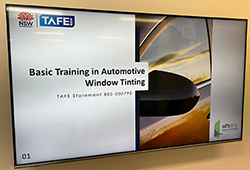
Created specifically for those new to the industry or those wanting to expand their skillset, the program addresses a pressing need for the provision of quality, independent, hands-on tinter training – something our members have been requesting for years.
At this stage, the courses are only running through TAFE Wollongong and a Bella Vista facility, but the plan is to roll out the program into other States and Territories.
This is a first step towards working with TAFE on the development of a Cert II or Cert III in window film, which could open the door for window tinting to become an approved occupation for traineeships, apprenticeships and working visas.
Boyd Hunter, who works alongside Danielle to deliver the training, comments:
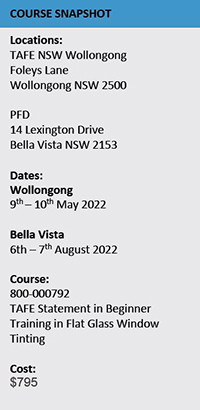
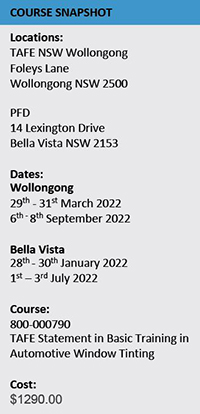
“It’s great to see the level of professionalism that Danielle and the TAFE team bring to our industry. TAFE NSW have welcomed me with open arms. This makes the transition from industry trainer to TAFE trainer enjoyable.
Our 2021 training schedule was heavily impacted due to COVID, but it’s great that we are back up and running. We have an Automotive and Flat Glass coursed fully booked, this closes out the year strong. We already have students booked for the January TAFE course running at Bella Vista.
After the completion of the training courses, I have kept in contact with most of the students, providing ongoing technical support and mentoring. It is extremely rewarding to be a part of their journey in the window tinting industry.”
Tinters tell us it takes months for a trainee tinter to make money for a business, as a huge amount of time and resources are spent training them up. These beginner courses are designed to shorten the duration of that initial training period so they can hit the ground running.
If you’re interested in learning more or you’d like to confirm a placement, feel free to contact TAFE trainer Danielle Corti, Danielle.corti@tafensw.edu.au.
Exploring cyberprotection
We often use the word ‘protection’ when selling the benefits of film. Solar protection, protection from fading, UV protection, protect your family from injury, protect your belongings from theft, etc. Cyberprotection is a timely one to add to the list.
When unprotected, radiation transmitted by electrical equipment like computers and phones can be intercepted and decoded. For many years window films have been used in government and business offices around the world to help prevent electronic espionage through windows.

Yet with more people than ever working from home, the demand for this form of protection has expanded into the home, as home offices don’t have the same comprehensive cybersecurity systems that cover corporate networks.
The other motivation installing cybersecurity films is EMI shielding. Mobile phone towers can emit high levels of this invisible radiation. Electromagnetic interference (EMI) is the disruption of electromagnetic radiation that can be caused by mobile phone towers.
EMI shielding is a burgeoning area of the window film industry, receiving renewed attention due to technological advances presenting new considerations, such as the introduction of the 5G network.
A number of window films are available in Australia and New Zealand to protect from electronic theft, remote spying, cyberattacks and hacking, which also offer EMI shielding.
These films act as a barrier, a transparent metal layer blocking the wavelengths of electromagnetic radiation. Films with a high metal content give the best shielding values. The metal type also influences shielding properties, with more conductive metals showing better electromagnetic attenuation.
The thing about dual cabs
A regular ute is typically classified as a goods vehicle, basically because its primary function is to move goods not passengers. But what about the dual cab?
To solve the riddle once and for all NSW Roads & Maritime was contacted for a definitive answer – is a dual cab ute classified as a passenger vehicle with 20% VLT allowed on rear windows, or a goods vehicle with 0% VLT allowed on rear windows?

The reply below is from the Technical Enquiries Officer, Regulatory Operations, Safety, Environment & Regulation, Transport for NSW:
To determine if a vehicle is a ‘goods carrying vehicle’ you must refer to the vehicle identification (compliance) plate. The plate will display the vehicle category. If the category is NA (1 or 2), NB (1 or 2) or NC, the vehicle is a goods carrying vehicle. If an identification plate cannot be located the manufacturer should be contacted to supply this information.
NA Light Goods Vehicle A goods vehicle with a GVM not exceeding 3.5 tonnes. NB Medium Goods Vehicle A goods vehicle with a GVM exceeding 3.5 tonnes but not exceeding 12.0 tonnes. NC Heavy Goods Vehicle A goods vehicle with a GVM exceeding 12.0 tonnes.
If all the following apply to a motor vehicle, the motor vehicle’s rear glazing may be coated to achieve a luminous transmittance of 0% or more: (a) the vehicle is fitted with at least 1 rear vision mirror to each side of the vehicle; (b) the vehicle is designed primarily for the carriage of goods; (c) the vehicle has: (i) at least 4 wheels, or (ii) at least 3 wheels and a GVM of more than 1 tonne.
Rear glazing, for a motor vehicle, means glazing used in a window or interior partition of the motor vehicle located behind the driver in the normal driving position.
This is all as per the NSW Road Transport (Vehicle Registration) Regulation 2017 (https://www.legislation.nsw.gov.au/#/view/regulation/2017/451/sch2/inDoc1/part4/div1/sec44).
In short, always check the compliance plate for a NA, NB and NC goods vehicle classification, and follow the regulations in your state. If you can’t find the compliance plate, contact the manufacturer.
Design does matter
On the June 17, WFAANZ Vice President Rob Hamilton presented a Design Matters webinar entitled Window Film, NatHERS & WERS For Film to 76 building designers, thermal performance assessors, architects, surveyors and interior designers from across the country.
Design Matters is a “…leading professional body for Building Designers and related industry professionals. Our members share a passion for better design and sustainability across the Built Environment. We support our members through networking, education mentoring and government advocacy programs Australia wide.”
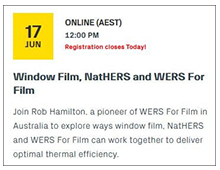
Forming part of the Design Matters CPD program, the session was extremely well received. The Q&A session went past the time duration, and all unanswered questions had to be addressed over email afterwards. The session was recorded, and will be viewed in the future by any Design Matters member wanting to learn more about window film, energy, NatHERS and the particulars of WERS For Film.
Blockbuster publicity
Window film was endorsed twice in a key episode of Channel Nine’s renovation supershow The Block this season. During the front yard/entry reveals, the only criticism of Georgia and Ronnie’s stunning façade was lack of privacy due to a glass front door.
Georgia: “We’ve just gotta figure out that door…we’ve gotta put frosted film on it.”
Ronnie: “Easily fixed mate.”
Later in the episode, design expert Darren Palmer critiqued the front door of Kirsty and Jesse’s home by saying, “If it were me, I would definitely want to frost that”.
Some people crave privacy and others aren’t as fussed, but in either case it’s a design dilemma that can be solved quickly, easily and beautifully with frosted film installed by a professional. Image credit: 9Now
Victoria gets the right advice
VicRoads has updated its website with a full explanation of the VLT regulations on the Window Tinting Information page, including the 20% VLT allowance for all windows behind the B pillar in passenger vehicles.
Visit the window film page on the VicRoads website here.
How AS2208 revisions impact tinters
If you’re a flat glass tinter who installs safety film, you should keep abreast of AS2208 revisions. AS2208 is the Australian Standard that outlines how films should be tested to meet Grade A safety standards.
A review committee has been set up by Standards Australia to discuss how the standard should be updated. WFAANZ representative on that committee, Rob Hamilton, safeguards the interests of our industry during those discussions.
WFAANZ – and in particular Rob and his team – have gone to great lengths this year to make a case for safety film on issues such as the longevity of safety film, safety labels, how long a film distributor’s test results should last (i.e. how often they should have their products retested), and weathering test procedures. For further information on the detail or status of any of these points, feel free to email ally.cronan@optusnet.com.au.
If you’re interested in learning more about your current obligations in regards to safety labels, download the technical bulletin here.
At this stage, Rob anticipates the revisions will come into effect late 2023. WFAANZ will of course keep our membership updated along the way, and will distribute the revised document once it enters public comment phase.
Tackling the cooler climate question
If a film blocks 87% solar heat gain through the window, what about in winter when we actually want the solar gain to heat up the building?
It’s a question we get asked a lot here at WFAANZ. Below we offer a simple explanation.
High heat rejecting films (like 87%) would be specified for hot climates, or for example, a west facing room with minimal open ventilation where cooling is a problem year-round.
For cooler/mixed climates where both cooling and heating at certain times of the year is required, a lower heat rejecting film or a Low E film would be recommended, offering both heat rejection and heat retention.
There is a trade-off during heating periods even with the Low E films, which are rejecting around half the solar heat, in that you want the free heat from the sun to help heat the building. However, the sun is only on one side of the building at any given time, so while one side of the house may be missing out on the free heat, the other side of the house is not missing out on free heat, plus, those windows are working to reduce heat loss through the low emissivity performance.
Consider too the insulation from Low E films also occurs at night and on cloudy days, when there is no sun.
Overall, the net effect is a positive for a building by using a Low E film.
Other things to consider:
- Most commercial buildings actually cool year-round for at least some part of the day. This is due to large percentage of glass in the facade, and the free heat generated inside by people and electronic equipment. For this reason, heat rejecting films are most often specified for commercial buildings, and not Low E films.
- The Australian climate – even in ‘colder’ regions like Canberra and Melbourne – is such that extreme temperatures are seen in Summer and Winter, so the ability to reject heat as well as retain it is actually ideal.
QUOTES OF NOTE
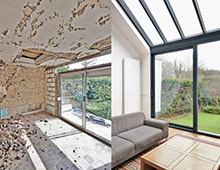
Renovate or rebuild?
Australian Home Renovations managing director Greg Kearney says that when discussing renovation projects, about 50% of homeowners are now asking about sustainability, with a push to explore the green benefits of renovating rather than rebuilding. This trend bodes well for retrofit energy solutions like window film.

The savings add up
“Once installed, window film may offer year-round savings of about five to 10 percent of the buildings’ total energy bill. New window films block 40-60 percent of all energy being lost through glass in winter and may cut cooling costs by 30 percent,” comments Darrell Smith, IWFA executive director.
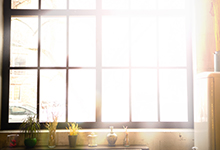
Dept of Energy weighs in
“Window films help block against solar heat gain and protect against glare and ultraviolet exposure…They can be useful for homeowners who don’t want to block views…but who have issues with glare and solar heat gain. They can also be a good choice on windows that are difficult to fit with other window treatments, or in places where artwork, furniture, or carpeting could be faded by UV exposure.” US Department of Energy website.
FEATURE ARTICLE
Understanding UV
As families prepare for Christmas road trips, now is the time to promote the UV benefits of auto film.
Yet some still mistakenly think privacy glass already provides ultimate UV protection. Here, we present some facts for tinters to use when having the ‘privacy glass versus aftermarket film’ discussion.
The New England Journal of Medicine states, “Car windows insufficiently absorb harmful UV rays, making prolonged exposure dangerous to a person’s skin even when he or she is inside the car.”
When discussing the benefits of film with your customers, it helps to understand the nature of UV. In a nutshell, there are two types of UV radiation – UVA and UVB. Scientists once thought UVB was the only dangerous one of the two, but that has been proven untrue.
UVA
- Causes tanning and sunburn.
- Proven to contribute to the development of skin cancer and premature aging.
- Early sunscreens only protected from UVB, but once UVA risks were discovered, manufacturers began adding ingredients to protect from both, i.e. broad-spectrum sunscreens.
- Penetrates the skin more deeply than UVB.
- Damages cells on the innermost part of the top layer of skin, where most skin cancers occur.
- Was used in tanning beds, which were once thought safe.
- Accounts for up to 95% of total UV radiation reaching the earth. Maintains the same level of strength during daylight hours throughout the year.
- UVA can penetrate windows.
UVB
- Penetrates/damages the outermost layers of skin. Overexposure can cause suntan, sunburn and blistering.
- Connected to the Sun Protection Factor (SPF) on sunscreens.
- Can damage your skin year-round, especially at high altitudes or on reflective surfaces like snow or ice.
- Slightly more intense than UVA rays.
- UVB can be filtered, and does not penetrate glass.
Once it was discovered that UVA, like UVB, poses serious health risks – it changed the way we look at privacy glass.
Glass used in windscreens usually provides ample protection from UVA and UVB, but side windows are a different story. Medical studies that derived a sun protection factor (SPF) rating for car windows score windscreens around 50 SPF, but other windows (not made from laminated glass) score beneath 20 SPF (Medical Daily link).
The Cancer Council and RACQ websites both refer to the fact that “…ordinary automotive glass filters out about 97% UVB and only 37% UVA, while laminated glass in windscreens and some side windows block all UVB and about 80% UVA.”
So, in cases where side windows are not laminated, around 63% of UVA radiation could be penetrating the glass. Even with laminated windows, about 20% of UVA could be getting inside the cabin. When weighed against the fact that aftermarket film offers 99% UV protection against both UVA and UVB, the case for window film becomes more clear cut.
Something to keep up your sleeve next time a customer claims privacy glass offers all the protection they need. Because when it comes to guarding your family and friends from sun exposure, why not shoot for all the protection you can get?
ASK AWAY
We overlooked BASIX requirements when ordering windows and are looking to rectify the issue with tinting if possible (rather than replacing the glass). We are looking to comply with U-Value 5.7 and SHGC 0.47. This is for a large sliding door consisting of four glass panes approximately 2m x 1m in a single pane aluminium frame.
You can easily go ‘shopping’ for a certified WERS rated film product in the WERS online directory. The list for all WFAANZ distributors can be found in the WERS directory.
NB: films are rated on multiple window types. In this case, look at ratings that are: Applied Film on WERS Standard Industry Typical Aluminium Window – Single Glazed.
In BASIX you need the U value to be anything lower and the SHGC to be +/-10% of the target value.
Once you find a film or films that meet your BASIX requirements, you can contact the distributor and ask for an installer in your area who works with that film, and for a WERS For Film certificate to give the certifier for sign off.
Can a window film installer give you a total window system certificate, to satisfy NatHERS requirements?
WERS accredited installers can provide a WERS for Film certificate, which is a Whole of Window certificate, just the same as a window manufacturer would provide.
Do films rate differently if installed outside to inside?
For heat rejection an external film will perform better as the heat rejecting layer of the film is in direct contact with the solar energy and so can reflect as much as possible away from the window.
When installed internally the solar energy travels through the glass first, so the glass absorbs some of the heat before the film can reflect it away. When the energy is reflected back after hitting the film, the reflected energy goes back through the glass again, so the glass absorbs more of the heat.
As absorbed heat is re-radiated inwards and outwards this way, all in all, there is some extra heat gain in the building from the extra absorbed heat with internally installed film.
However, this is not a huge amount. A common product used for decades on commercial buildings seeking maximum heat rejection is a reflective Silver 20% film. Installed internally the SHGC is 0.21 and externally it is 0.18, so only 3% more heat rejection overall when external. When specifying films, installing internally is advisable wherever possible because, even though the total heat rejection is slightly less, the benefits to the film’s longevity is advantageous.
Can you have a Low E film that is also a privacy film, or would that require two films?
There are a couple of Low E films with a privacy aspect available in the market today. They are what you would call medium performance Low E films. The high performance Low E films are very light in the 70%/75% VLT range. Designed for maximum light transmission and minimal change to aesthetics means they do not provide privacy. If you want a high performance Low E film and privacy then the answer would be to install a reflective privacy film first and then the Low E film over it, which will not affect the low E ability to retain room heat. Check with the installer about the provision of a warranty on such an install though, as manufacturers typically do not offer a warranty on double layer applications.
MEMBERS
New certificate sets you apart
Members would have noticed the new look member certificate sent in your membership packs this year. We encourage you to put it on display to distinguish your business as one which abides by a code of conduct and is committed to upholding industry standards.
If your marketing goal is to set your business apart from your competitor down the road, a WFAANZ certificate visually signals that you pride yourself on quality and assurance.
For more ideas on how to squeeze every last marketing drop out of your membership, take a look here.
Keeping it legal in NZ
WFAANZ has created a specific VLT fact sheet for our New Zealand members, outlining the regulations and considerations when selecting the right auto film. It’s designed to support your conversations with customers who question why they can’t have darker film. It was emailed to all our NZ members, but please feel free to contact me (ally.cronan@optusnet.com.au) if you’d like to be sent a copy.
Welcome to WFAANZ
Looking for tinters…
Tint A Car Caroline Springs, VIC: looking for an auto tinter with minimum two years experience to join the team on a part or full time basis. Drivers license a must. If you’re keen to work in a busy workshop as part of a dynamic team, please contact Sash on 0425 844 040.
Tropi-Cool Window Tinting, Cairns, QLD: looking for a skilled and experienced flat glass window tinter to join the team. Must have a manual drivers license, be well presented, trustworthy, reliable and able to communicate well with customers and staff regarding projects and schedules. 38hr week, phone and vehicle provided. Training available for the right applicant. Email tropi-cool@bigpond.com or call 07 4031 5457.
Tinter employment network
A topic on everyone’s mind lately: employment and retention – finding good tinters and keeping them. Two services you may not know WFAANZ provides – we have an online employment page listing jobs; and we have a contractor directory.
The contractor directory is for WFAANZ members only, you can find it in the members only area of the website. It lists the tinters who are available for contract work. While the list is only accessible to members, you don’t have to be a member for a free ad on the directory. Contact ally.cronan@optusnet.com.au if you’re an experienced tinter interested in promoting your services.

And just like that, it was Christmas…
After the year we’ve had, this Christmas break is going to be one to remember. Time to celebrate everything that matters in life. Deb and I extend our warmest wishes to our Australian and New Zealand WFAANZ members and the entire window film industry this festive season.
The secretariat closes December 23 and reopens January 10. WFAANZ marketing office closes December 22 and reopens February 1.
Stay safe and be well.
From Ally Cronan, WFAANZ President

